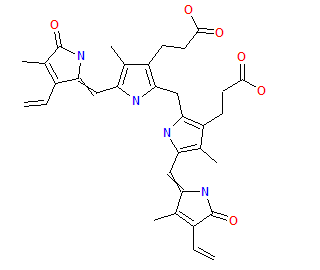Kernicterus: Difference between revisions
Adeeljamil (talk | contribs) No edit summary |
(No difference)
|
Revision as of 18:20, 9 March 2009
|
WikiDoc Resources for Kernicterus |
|
Articles |
|---|
|
Most recent articles on Kernicterus Most cited articles on Kernicterus |
|
Media |
|
Powerpoint slides on Kernicterus |
|
Evidence Based Medicine |
|
Clinical Trials |
|
Ongoing Trials on Kernicterus at Clinical Trials.gov Clinical Trials on Kernicterus at Google
|
|
Guidelines / Policies / Govt |
|
US National Guidelines Clearinghouse on Kernicterus
|
|
Books |
|
News |
|
Commentary |
|
Definitions |
|
Patient Resources / Community |
|
Patient resources on Kernicterus Discussion groups on Kernicterus Patient Handouts on Kernicterus Directions to Hospitals Treating Kernicterus Risk calculators and risk factors for Kernicterus
|
|
Healthcare Provider Resources |
|
Causes & Risk Factors for Kernicterus |
|
Continuing Medical Education (CME) |
|
International |
|
|
|
Business |
|
Experimental / Informatics |
Please Take Over This Page and Apply to be Editor-In-Chief for this topic: There can be one or more than one Editor-In-Chief. You may also apply to be an Associate Editor-In-Chief of one of the subtopics below. Please mail us [1] to indicate your interest in serving either as an Editor-In-Chief of the entire topic or as an Associate Editor-In-Chief for a subtopic. Please be sure to attach your CV and or biographical sketch.
| Kernicterus | |
 | |
|---|---|
| Bilirubin | |
| ICD-10 | P57 |
| ICD-9 | 773.4, 774.7 |
| DiseasesDB | 7161 |
| MedlinePlus | 003243 |
| eMedicine | ped/1247 |
| MeSH | D007647 |
Kernicterus is damage to the brain centers of infants caused by elevated levels of bilirubin. This may be due to several underlying pathologic processes. Newborn babies are often polycythemic, meaning they have too many red blood cells. When they break down the cells, one of the byproducts is bilirubin, which circulates in the blood, and causes jaundice. Alternately, Rh incompatibility between mother and fetus may cause hemolysis of fetal red blood cells, thereby releasing unconjugated bilirubin into the fetal blood. Since the fetal blood brain barrier is not fully formed, some of this released bilirubin enters the brain and interferes with normal neuronal development.
In adults and older children, jaundice is harmless in and of itself. However, the tissues protecting the brain (the blood-brain barrier) are immature in newborns. Bilirubin penetrates the brain and is deposited in the basal ganglia, causing irreversible damage. Depending on the level of exposure, the effects range from unnoticeable to severe brain damage.
Some medications, such as trimethoprim/sulfamethoxazole may induce this disorder to the baby when taken by the mother.
External links
- CDC’s National Center on Birth Defects and Developmental Disabilities
- PICK - Parents of Infants and Children with Kernicterus
Template:Certain conditions originating in the perinatal period Template:SIB de:Bilirubinenzephalopathie